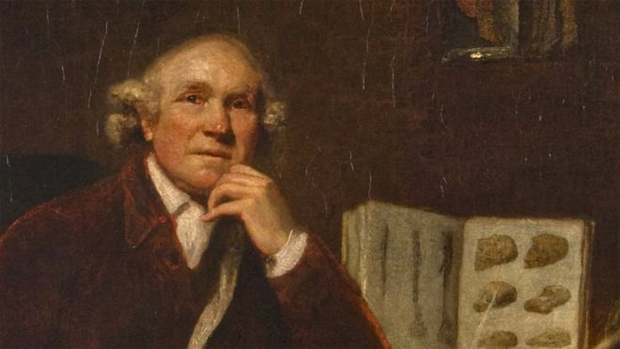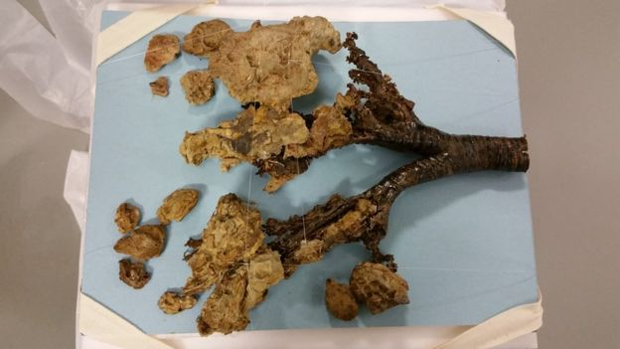|
Doctors
have confirmed a diagnosis made more than 200 years ago by one of
medicine's most influential surgeons.
John Hunter had diagnosed a patient in 1786 with a "tumour as hard as
bone".
Royal Marsden Hospital doctors analysed patient samples and case notes,
which were preserved at the museum named after him - the Hunterian in
London.
|
|
 |
|
As well as confirming the diagnosis, the cancer team believe Mr Hunter's
centuries-old samples may give clues as to how cancer is changing over
time.
"It started out as a bit of fun exploration, but we were amazed by John
Hunter's insight," Dr Christina Messiou told the BBC News website.
Mr Hunter became surgeon to King George III in 1776 and is one of the
surgeons credited with moving the medical discipline from butchery to a
science.
He's also rumoured to have given himself gonorrhoea as an experiment
while writing a book about venereal diseases.
His huge medical collection is now housed at the Hunterian Museum at the
Royal College of Surgeons.
It includes his colourful notes describing a man who arrived at St
George's Hospital, in 1786, with a hard swelling on his lower thigh.
"It appeared to be a thickening of the bone, it was increasing very
rapidly... On examining the diseased part, it was found to consist of a
substance surrounding the lower part of the thigh bone, of the tumour
kind, which seemed to originate from the bone itself."
|
|
 |
|
Mr Hunter amputated the man's leg and he recovered briefly for four
weeks.
"From this time he began to lose flesh and sink gradually, his breathing
more and more difficult," the notes continued.
The patient died seven weeks after the operation and an autopsy
discovered bony tumours had spread to his lungs, the lining of the heart
and on the ribs.
More than 200 years later, the samples fell under the gaze of Dr
Christina Messiou.
She said: "Just looking at the specimens, the diagnosis of osteosarcoma
came very quickly to me and John Hunter's write up was amazingly astute
and fits with what we know about the behaviour of the disease.
"The large volumes of new bone formation and the appearance of the
primary tumour are really characteristic of osteosarcoma."
She went to get a second opinion from her colleagues at the Royal
Marsden in central London.
And in an out-of-hours session at the hospital they used modern day
scanning technology to confirm the centuries old diagnosis.
Dr Messiou, whose speciality is sarcoma, told the BBC: "I think his
diagnosis is really impressive and in fact his management of the patient
followed similar principles to what we would have done in the modern
day."
But she says the exciting stage of the research is still to come.
|
|
 |
|
They are now going to compare more of Hunter's historical samples with
contemporary tumours - both microscopically and genetically - to see if
there are any differences.
Dr Messiou told the BBC: "It's a study of cancer evolution over 200
years and if we're honest we don't really know what we're going to find.
"But it would be interesting to see if we can link lifestyle risk
factors with any differences that we see between historical and current
cancers.
"So we've got big ambitions for the specimens."
Writing in the British Medical Journal, the Royal Marsden team
apologised for delay in analysing the samples from 1786 and the obvious
breach of cancer waiting times, but point out their hospital was not
built until 1851. |